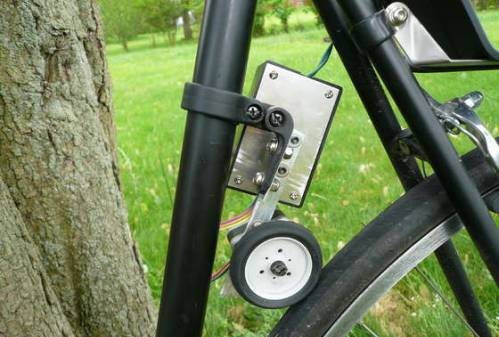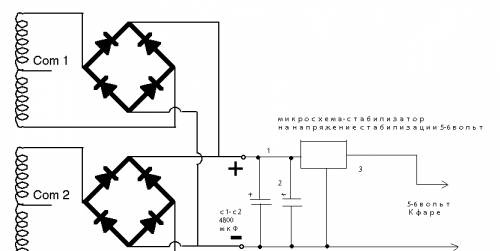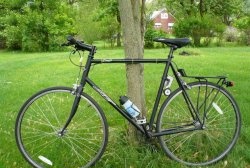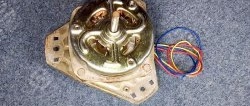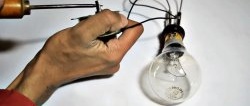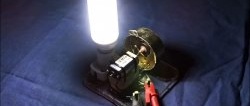A stepper motor is not only a motor that drives various devices (printer, scanner, etc.), but also a good generator! The main advantage of such a generator is that it does not need high speeds. In other words, even at low speeds, the stepper motor produces quite a lot of energy. That is, a regular bicycle generator requires initial revolutions until the flashlight begins to shine with bright light. This disadvantage disappears when using a stepper motor.
In turn, the stepper motor also has a number of disadvantages. The main one is large magnetic sticking.
Anyway. First we need to find a stepper motor. The rule works here: The larger the engine, the better.
Here I will introduce you to a couple of mounting options and a couple of stepper motor options.
Let's start with the biggest one. I tore it out of the plotter for printing, it's such a big printer. The engine looks quite large.

Before showing you the stabilization and power diagram, I want to show you the method of attaching it to your bike.

As can be seen from the figure, our generator is screwed closer to the wheel axis and rotates from an additional circle. Here you need thought and ingenuity, each of you needs to come up with a mount and a circle of rotation yourself, since there are a lot of options.
Here is another option with a smaller engine.
Details:
I think each of you will choose the most suitable option for him when building.
Well, now it’s time to talk about lanterns and power circuits. Naturally, all lights are LED.
The rectification circuit is conventional: a block of rectifying diodes, a pair of high-capacity capacitors and a voltage stabilizer.
Typically there are 4 wires coming out of the stepper motor corresponding to two coils. Therefore, there are two rectifier blocks in the figure.
Our generator is capable of generating up to 50 volts of voltage at high speeds, so capacitors must be taken for a voltage of at least 50.
And the stabilizer is for a voltage of 5-6 volts.
What's so good about our homemade product?! - The fact is that even when moving away, our flashlight shines brightly! And during the movement it does not flicker or go out.
That's all !
